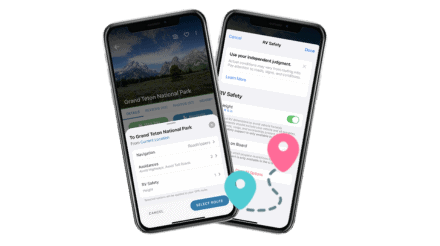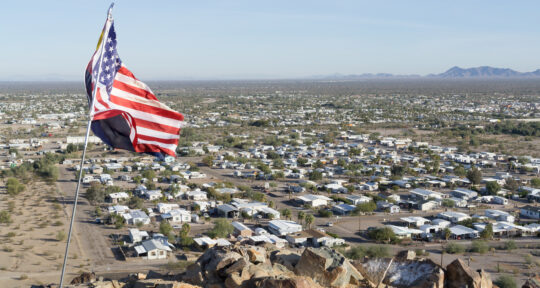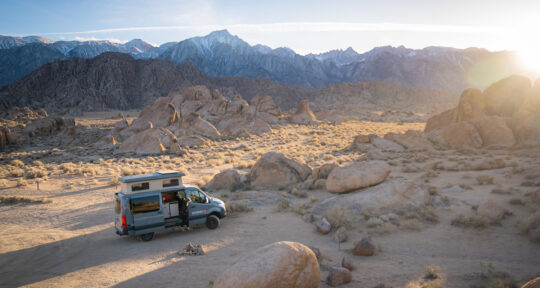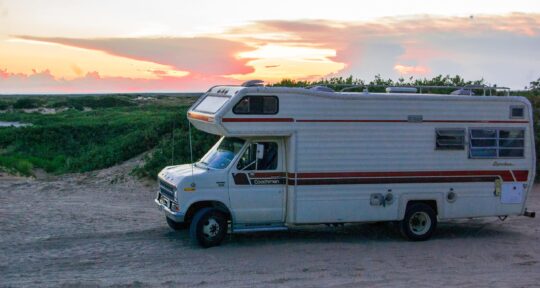Traveling in a large RV offers perks beyond just added floor space. Big rigs host large fresh water and holding tanks, roof space for solar panel setups, and powerful generators—allowing for extended stays in dispersed and non-serviced locations. Bonus amenities such as washers and dryers, full-sized showers, large refrigerators, multiple living spaces, and extra storage capacity can typically be found in RVs longer than 35 feet.
Whether you’re a weekend traveler, a part-time RVer, or live in your rig full-time, navigating roads and campgrounds in a big rig often entails a bit of extra planning.
6 steps to planning a successful RV road trip
Considerations for campgrounds and campsites
RVs have advanced in both design and size, but not all campgrounds were built or have been upgraded to accommodate large or heavy rigs. Confirm that a campsite can accommodate a big rig by verifying that both the campsite you’ve selected and the access roads to that camping space can support your rig’s overall length, width, weight, and ride height.
If the campsite pad is dirt or grass, make sure you have the correct tools to level your rig. Heavy rigs and their levelers are known to sink into soft pads—including asphalt. Wet weather can further impact a site’s ability to support larger rigs.
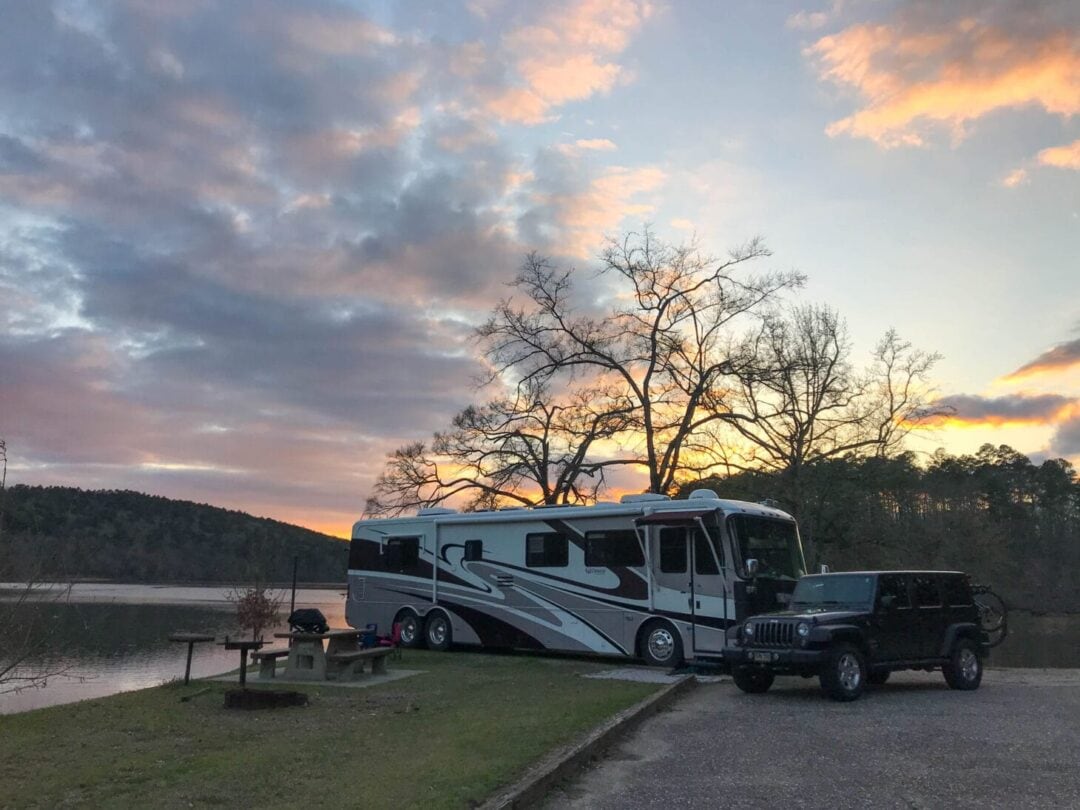
When researching, consider the campsite’s stated length and width. Look out for any mentions regarding vegetation overgrowth or low-hanging tree branches. Be prepared to respect the boundaries of established campsites. It’s necessary to choose another option if you suspect or realize your rig might negatively impact campsite conservation.
Keep reports of a campsite’s grade in mind. Most refrigerators need to be level to function properly, but RVs with longer wheelbases can be difficult to level in a site with a moderate grade or more.
Read reviews left by previous travelers on Campendium, parse through the location’s official website, utilize satellite-based mapping tools, or contact the management of the location to confirm all of this information.
If you arrive at the entrance to your destination and are questioning accessibility, scout ahead. While this practice is typical for large RV dwellers exploring dispersed camping areas, it’s also good practice when pulling up to any campground with dubitable access. Unhooking a towed vehicle, dropping your tow-behind RV, or walking or biking the rest of the route may seem like a hassle, but it can save you stress, time, and money.
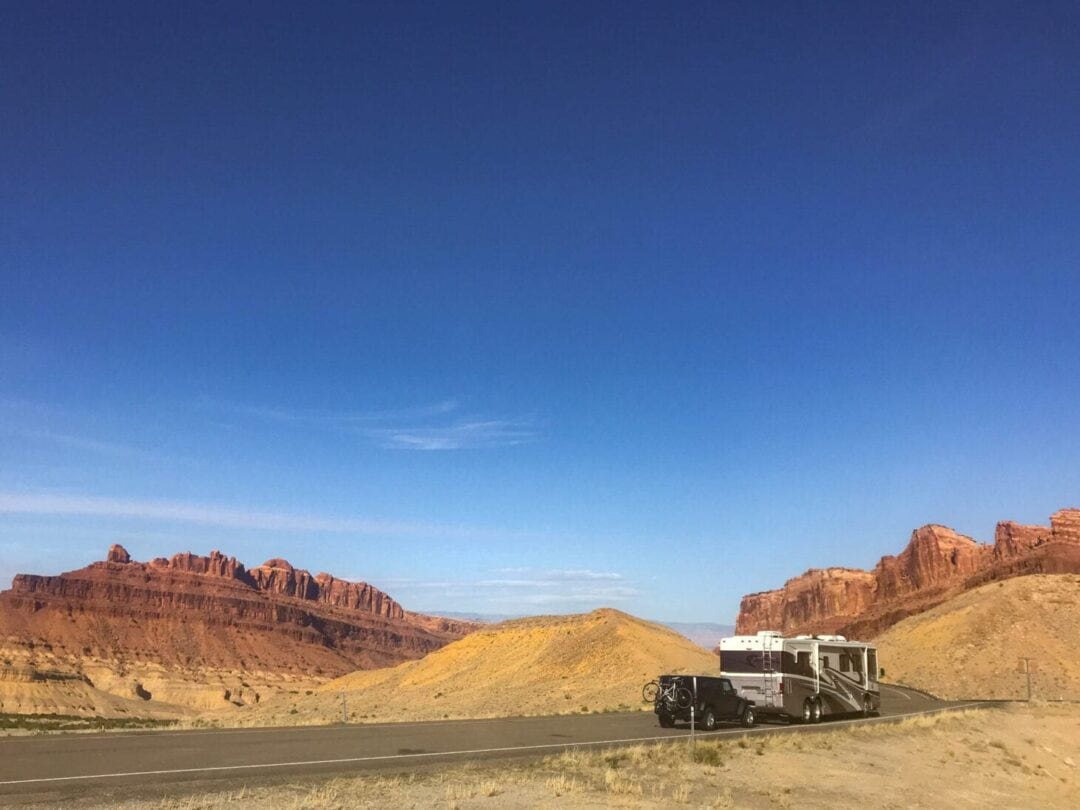
Finding safe routes in your big rig
Always check predicted weather conditions when you’re driving or towing your big rig. The flexibility to leave a location early or late depending on wind or precipitation conditions could save you from a frightening driving experience or accident. (You can now add your RV’s height and other features in Roadtrippers to view RV-friendly routing options.)

Insider tip
The highest clearance is typically found toward the center of an underpass.
It’s also prudent to consider weather conditions when planning to traverse a route with numerous or steep grades. Big rig engines are subject to overheating when pushing or pulling up long grades. When the outdoor temperature is high, the risk of engine overheating rises. If you don’t have a substantial braking system on board, or the weather is not optimal, routing around long or steep downgrades may be worth the added time and fuel.

Insider tip
Consider commuting with empty holding tanks. Not only do full tanks decrease fuel efficiency and tax an engine, added liquid weight can decrease braking efficiency.
Driving fatigue besets many big rig drivers more quickly than when driving an automobile. Also, big rig accessible rest stop locations aren’t as readily available. Planning possible break locations ahead of time at rest areas, truck stops, or big box store parking lots makes for a more enjoyable and safe journey.

Insider tip
Big box stores and grocery chains typically feature large lots with ample, big rig-friendly parking options during local operating hours and are often within walking distance of restaurants and coffee shops.
It’s in everyone’s best interest that large RV operators move slowly and methodically, even if that means holding up traffic. When the opportunity to allow more agile vehicles to pass arises, it’s kind to permit that.
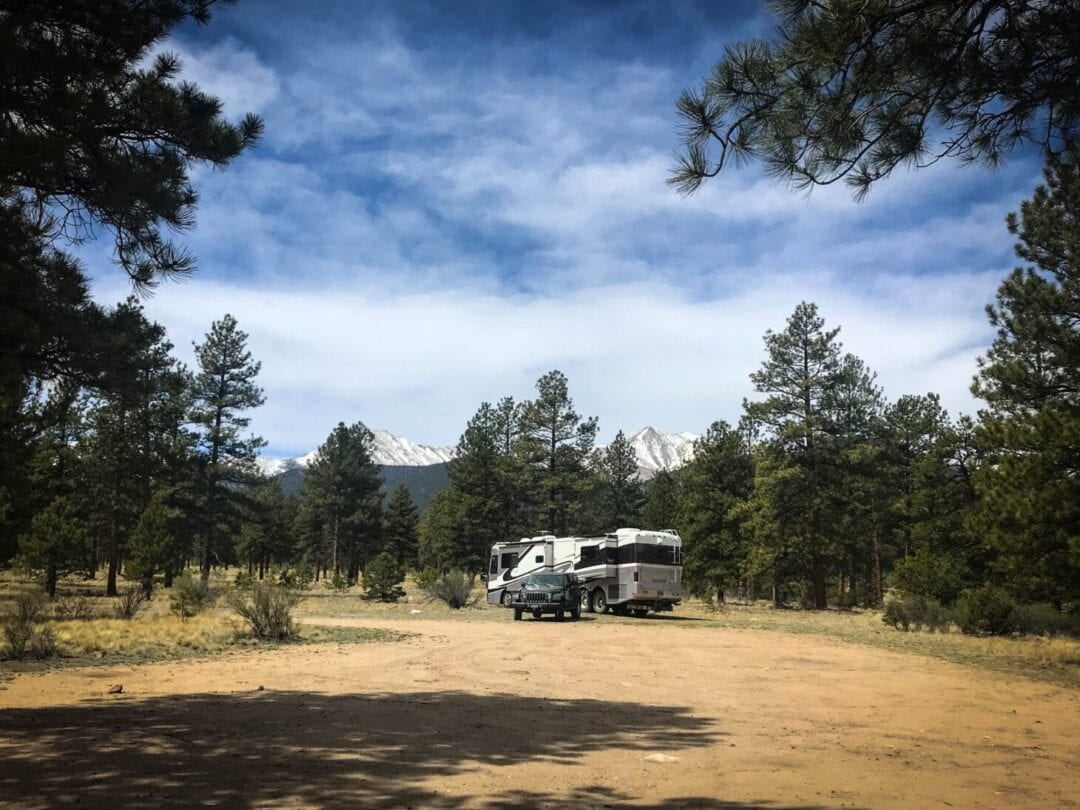
How to find overnight RV parking with a big rig
Occasional size restrictions may prohibit you from a campsite, but a bit of research and flexibility can lend to an amenable overnighting solution.
How to find a safe place to park your RV or van for the night
- Use Overnight RV Parking to find stops that allow overnight RV parking, and read comments to find any notes about big rig restrictions.
- Willingness to camp outside the boundaries of some national parks or gateway towns and explore the destination by towed vehicle, bike, or public transport will solve many size restriction issues.
- The Campendium app allows you to filter search results by known size limitations at a camping area. You can also readily see the “longest RV reported” at a location and sort reviews by reported RV size.
- It’s good practice to keep a backup camping option in mind. A campsite or road that a fellow big rigger may find suitable may not work for your rig.
Big rig RVing packages mobility and self-contained modern comforts. Careful research when traveling with your large rig will lead to an enjoyable and safe adventure. Equip yourself with a plan, a backup plan, and flexibility for all your big rig travels.

